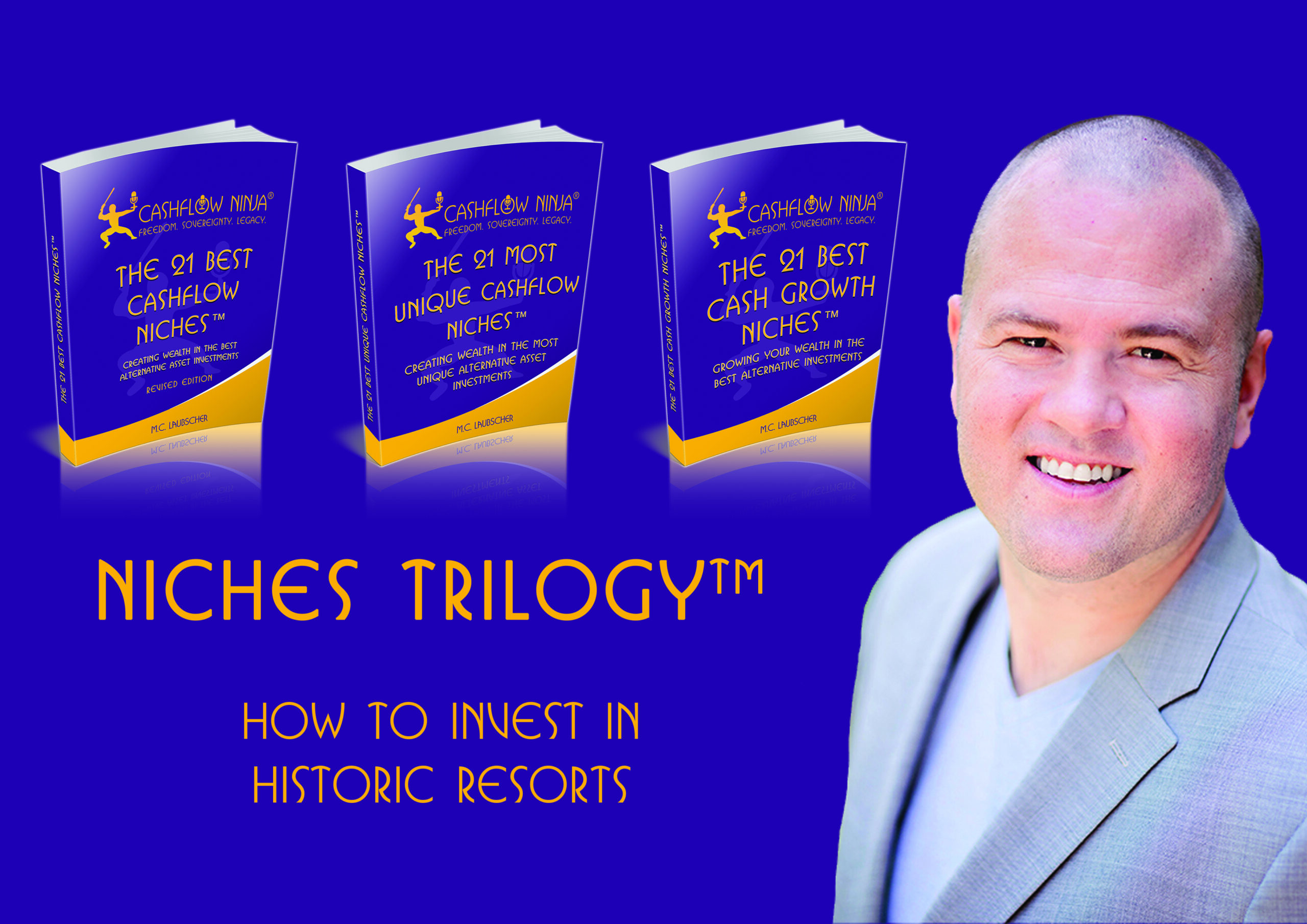
Historic resort hospitality properties are accommodations that hold significant historical, cultural, or architectural value. They can include grand old hotels, palaces, colonial bungalows, or repurposed forts and structures.
Why Invest In Historic Resorts?
The appeal of investing in historic resorts is multifold, and it’s easy to see why investors are drawn to these unique properties. Firstly, they offer an experience that blends a nostalgic charm with contemporary amenities, which modern structures can’t quite match. Their rarity due to limited supply also adds to their potential value as time progresses.
In today’s saturated hospitality market, historic properties give a brand a distinctive edge, enabling it to stand out. With their unique character and extraordinary experiences, these properties often command higher room rates compared to their newer counterparts.
Financial incentives are another appealing factor. Governments often provide tax breaks and grants to help preserve and restore historic properties, significantly reducing the costs associated with renovation and upkeep.
As cultural and heritage tourism grows, historic properties are ideally positioned to cater to this trend. They offer explorers the chance to immerse themselves in rich cultural experiences, adding to their allure.
Historic properties also align with sustainable development practices. Instead of building new structures, repurposing these existing ones appeals to the environmentally conscious traveler. Moreover, these properties’ deep-rooted ties with the local community offer guests an authentic local experience while fostering strong community support.
Investing in well-maintained historic properties in prime locations can offer potential appreciation in real estate value and earning potential over time. Lastly, for some investors, the emotional value of preserving a piece of history adds a layer of significance that goes beyond monetary gains.
Symbiotic Revenue Opportunities
Historic resorts like the Renault Winery in New Jersey have evolved to cater to a broad spectrum of guests and events. This versatility drives revenue and acts as a buffer against market fluctuations. Just imagine the multitude of ways these resorts generate income.
Take weddings, for instance. Historic resorts make for ideal wedding venues with their stunning ballrooms, scenic views, and timeless allure. They offer all-inclusive services, from providing the venue and catering to guest accommodations and sometimes even planning services.
The Renault Winery, one of America’s oldest continuously operating vineyards, draws visitors with wine tours, tastings, and wine-making classes. The sale of their own wines boosts revenue and enhances the resort’s brand.
Golf is another significant revenue stream. Many historic resorts boast sprawling golf courses, attracting both casual players and golfing enthusiasts. Then, there are fine dining experiences at resort restaurants, which become irresistible attractions when coupled with wines from the resort’s vineyard.
Historic bars, with their classic cocktails, wine tastings, and occasional live music, provide guests with a relaxing space after a day full of activities. To further enhance the guest experience, luxury spas offer a range of wellness services from massages to facials.
Besides hosting event attendees or those using the resort’s amenities, the hotel can accommodate corporate retreats and family reunions or serve as a weekend getaway. Seasonal events like summer concerts, Christmas markets, or harvest festivals add another dimension to the resort’s offerings.
Collaborations with local businesses or attractions draw more visitors, with package deals often including a winery tour at the resort and a visit to a nearby attraction. Remember, the sale of branded products like wines and other resort merchandise provides an added source of revenue.
This diverse approach creates a vibrant and sustainable business model that draws in various guests. The interconnected nature of these revenue streams, such as a couple visiting for a wine tasting and deciding to book their wedding at the resort, ensures a consistent flow of revenue and maximizes guest spending potential.
These multifaceted offerings also aid in market segmentation, ensuring the resort appeals to various demographics – from young couples seeking a wedding venue to retirees planning a golfing weekend. The key to the success of historic resorts like Renault lies in their ability to cater to a diverse audience while providing a comprehensive experience.
What to Consider When Evaluating Historic Resorts
Venturing into the world of historic resort hospitality properties is a distinctive journey that blends the intricacies of both historic preservation and the hospitality industry. When contemplating such an investment, there are several key considerations.
First, you’ll need to grasp the property’s historical significance. Is it recognized as a historic landmark? Understanding this adds to its allure and informs you of any preservation restrictions that could limit your renovation or modification plans.
The condition and maintenance of older properties often present unique challenges, from outdated infrastructure to wear and tear and sometimes even structural issues. Thus, a comprehensive inspection becomes crucial to uncover potential problems and estimate the cost of remedying them.
Further, due to their historical nature, maintaining or renovating these properties might necessitate specialized materials or artisans, which can be more costly. So, factor in the ongoing costs of upkeeping the property to its historic standards.
Next, let’s talk about market demand. It’s vital to gauge the appetite for such a property in your chosen location. Are travelers seeking out historic resort experiences? And remember the competition. Are there other landmark resorts or hotels that you’ll be vying with?
Then comes the evaluation of potential revenue streams. From accommodations to events and amenities like spas, golf courses, or wineries, determine if these are currently being maximized or if there are untapped opportunities you can capitalize on.
Location is another significant consideration. The accessibility of the place, the attractions around it, and its overall appeal to potential guests play a pivotal role in drawing visitors to your resort.
Managing a resort calls for a diverse skill set, spanning guest services, maintenance, and marketing. It’s worth pondering whether you possess the necessary expertise or if you’ll need to rope in professionals.
Also, ensure you’re up-to-date with local regulations, especially if you plan to add or expand features like a restaurant, bar, or spa. Ensure all essential licenses, particularly those related to serving food and alcohol, are in place or can be obtained.
If the property has been in operation, consider its existing reputation. While negative reviews or a tarnished image pose challenges, they’re not insurmountable. Conversely, a positive reputation can be leveraged in your marketing efforts.
Lastly, financing historic properties can sometimes be tricky due to age, potential repair needs, and niche market. So, be sure to explore all financing avenues open to you.
Historic Resorts Ecosystem
The historic resort ecosystem stands as a distinctive niche within the hospitality industry. It’s a fascinating constellation of various elements that collectively contribute to these unique properties’ smooth operation, meticulous preservation, and unforgettable guest experiences. Historic resorts offer much more than just a place to rest your head; they serve an intoxicating blend of historical significance, enriching cultural experiences, and, often, a dash of luxury.
At the heart of this ecosystem are the historic properties themselves. These resorts nestle within buildings or estates with considerable historical, architectural, or cultural value. They’re a living testament to bygone eras, often dating back decades or even centuries, and can sometimes be found in areas of historical importance.
Then, we have the preservation and restoration organizations. These vital governmental or non-governmental entities are the guardians of these properties’ historical integrity. They lay down the guidelines and offer invaluable support for preservation and restoration efforts.
Of course, this is only possible with management and ownership. This group comprises individuals or companies with a special knack for the hospitality industry, particularly those with a track record in managing unique, high-end properties. Their mission? To strike the perfect balance between the commercial aspects and preserving the property’s historical value.
Then there are the guests and patrons. These people choose to stay at historic resorts, often searching for more than just a place to sleep. They’re searching for an immersive experience that marries luxury with a rich cultural and historical backdrop.
Remember the local communities and culture. The local community and its vibrant culture often form an essential part of the resort’s charm. From indigenous traditions and mouth-watering cuisine to regional art, these elements can be significant draws.
Regulatory bodies also play their part. These government agencies, involved in historic preservation, tourism, and business licensing, have a significant role in supervising the operation and maintenance of these properties.
Finally, we have the wider tourism industry. Travel agencies, tour operators, and online travel platforms are the unsung heroes in marketing these resorts, helping attract guests from all around the globe.
How To Generate Income
Investing in historic resorts presents a unique blend of real estate and hospitality, opening up numerous avenues for income generation. Here’s how investors can capitalize on these opportunities.
Room rentals, often the backbone of most resorts, have an added advantage with historic properties. Their distinctive charm and meticulous upkeep allow them to command premium prices, contributing significantly to the revenue.
Then comes the food and beverage segment. Whether it’s a quaint on-site restaurant serving local delicacies, a vibrant bar, or indulgent room service, these facilities add to the guest experience and boost the resort’s income. Some dining or bar venues at historic resorts become attractions, drawing in a broader crowd.
With their timeless elegance, historic resorts are popular choices for hosting events and banquets. Be it a fairy-tale wedding, a corporate retreat, or a milestone celebration, these properties can generate considerable revenue by renting out event spaces and providing catering services.
If the resort boasts a spa facility, it opens up another profitable channel. Services like massages and wellness treatments can draw guests seeking relaxation and rejuvenation.
Historic resorts often have intriguing stories to tell. By organizing on-site tours and themed events, these properties can attract tourists and history buffs, turning their curiosity into a source of income.
Exclusive club memberships offering special access or pricing can create a steady revenue stream. Similarly, on-site retail outlets selling souvenirs, antiques, or luxury goods that resonate with the resort’s historic theme can be another profitable venture.
Some resorts even offer vacation ownership opportunities or sell parts of their property as private residences, tapping into real estate sales or timeshares.
The revenue continues beyond the obvious. Ancillary services like parking, business centers, or premium Wi-Fi can all contribute to the resort’s income. Owners of historic properties may also qualify for tax credits, grants, or financial incentives, effectively generating income or offsetting expenses.
Strategic brand partnerships and sponsorships with luxury or historic brands that align with the resort’s image can provide additional revenue streams. Resorts can also leverage their landmark status to sell branded merchandise or license their brand for various products and services.
Hosting cultural and educational programs such as lectures, classes, or workshops related to the resort’s history, architecture, or era can attract attendees and generate income. Moreover, marketing alliances with travel agencies or affiliations with luxury or historic hotel groups can expand the customer base.
How To Lose Money
Investing in historic resorts, while rewarding, has its unique set of risks. These challenges complement the standard hurdles associated with the hospitality industry. Let’s delve into some ways investors might find themselves on the losing end of the spectrum.
Firstly, the charm of older buildings often comes with a hefty price tag due to high maintenance and renovation costs. Unexpected structural issues or outdated electrical or plumbing systems can result in significant spending. Moreover, maintaining the property’s historical integrity can escalate expenses even further.
Secondly, the appeal of a historic designation can quickly fade when confronted with the stringent regulations and restrictions that accompany it. The inability to alter or renovate as desired, the high cost of meeting preservation standards, and the potential for fines or legal challenges due to non-compliance are all factors that can eat into your profits.
Misjudging the market can be another pitfall. If the historic allure fails to resonate with your target audience or your marketing efforts fall short, you could be left with low occupancy rates.
Operational inefficiencies present another challenge. Historic properties, designed in a different era, may need to align with modern operational needs, leading to inefficiencies in guest services or higher operating costs.
Economic downturns can hit luxury and niche markets hard. In times of recession, travelers often cut back on non-essential spending, which can significantly impact historic resorts.
Competition, too, can pose a threat. Newer resorts or those offering more modern amenities may lure your potential guests away, incredibly if they’re priced similarly.
Natural disasters are another risk. Older structures may be more susceptible to damage from earthquakes, floods, or fires, and insurance might only cover some of the costs, particularly if the property needs to be restored to its historical standards.
Liabilities and safety issues are another concern. Outdated designs may need to meet current safety standards, potentially leading to accidents, lawsuits, and higher insurance premiums.
The hospitality industry thrives on expert management, and a lack thereof can result in inefficient operations, poor guest experiences, or a lack of strategic vision, all of which can lead to financial losses.
Financing challenges may also arise. Lenders often view historic properties as riskier investments, leading to higher interest rates or more stringent lending terms.
Unexpected tax liabilities can crop up if the property doesn’t qualify for historical tax breaks or if those tax breaks are revoked.
Reputation damage is another significant risk in today’s digital age. Negative reviews can drastically impact bookings, and any mishap, irrespective of its relation to the building’s age, can deter potential guests.
Lastly, a resort’s success might depend on crucial personnel like a particular chef, historian, or event. Their departure or the cessation of the event can affect the resort’s appeal and, consequently, its success.
Positives & Negatives Of Historic Resorts
Positives:
Unique Selling Proposition (USP): Historic properties have a unique character and story distinguishing them from newer establishments. This can be a big attraction for tourists looking for a one-of-a-kind experience.
Potential Tax Benefits: In many countries, owners of historic properties may qualify for tax credits, grants, or deductions related to preservation and maintenance.
Cultural Significance: Owning a piece of history can bring personal satisfaction and turn the property into a landmark destination, attracting both locals and tourists.
Diverse Revenue Streams: Historic resorts often offer various amenities such as restaurants, bars, spas, golf courses, and event spaces, creating multiple income sources.
Community Engagement: Historic properties often strengthen community bonds. Engaging with local traditions and stories can create a sense of belonging and enhance the guest experience.
Limited Competition: Due to their distinct nature, historic properties face less competition than standard hotels or resorts.
Negatives:
Maintaining Costs: Older structures may require frequent repairs and maintenance. You might need specialized artisans or materials to preserve the property’s historic charm, which can drive up expenses.
Regulatory Limitations: Historic designations often come with strict renovation guidelines, restricting the changes you can make to the property.
Operational Challenges: Meeting the expectations of modern guests, who desire specific amenities and conveniences, can be tricky without compromising the property’s historic character.
Possibly Higher Insurance Costs: Some insurance companies might charge higher premiums for older structures due to perceived risks.
Higher Initial Investment: Acquiring a historic property, especially one with multiple amenities, may require a significant upfront investment.
Reputation Management: If the property has a history, whether positive or negative, new owners may inherit its reputation, which can impact future business prospects.
Market Volatility: The hospitality industry is sensitive to economic downturns, global events, or travel trends. Niche properties like historic resorts may be more susceptible to such fluctuations.
Complexity in Modernization: Introducing modern tech amenities such as integrated room controls or sustainable energy solutions can be more challenging in older structures.
Investment Opportunity Filter™
The Investment Opportunity Filter™ evaluates an investment opportunity based on cashflow, tax benefits, appreciation, and the leverage it provides.
Historic resorts score a 4/4 with The Investment Opportunity Filter™.
Historic resorts can produce significant cashflow, have great tax benefits, and the asset can appreciate since you can increase the value through operations and management. It also allows for leveraging of skillsets, capabilities, networks, and capital of others.
Download all the Niches Trilogy Books:
The 21 Best Cashflow Niches
Digital: https://www.
Audio: https://podcasters.spotify.
The 21 Most Unique Cashflow Niches
Digital: https://www.
Audio: https://podcasters.spotify.
The 21 Best Cash Growth Niches
Digital: https://www.
Audio: https://podcasters.spotify.
Listen To Cashflow Ninja Podcasts:
Cashflow Ninja
https://podcasters.spotify.
Cashflow Investing Secrets
https://podcasters.spotify.
Cashflow Ninja Banking
https://podcasters.spotify.
Share This
Related

840: Chris Rawley: How To Invest In Livestock
My guest in this episode is Chris Rawley. Chris is a retired Navy Reserve Captain, founded Harvest Returns in 2016 to democratize agricultural investments. During his 30-year military career, Rawley served in leadership roles across naval, expeditionary, and joint special operations units, deploying to regions such as Afghanistan, Iraq, Africa, the Middle East, and the…

839: Louis O’Connor: The Exciting Trends For Rare Earth Metals Right Now
My guest in this episode is Louis O’ Connor. Louis is the Founder, and Principal of Strategic Metals Invest. We are the only industry supplier in the world to offer private investors the option to purchase and profit from owning Strategic Metals. The investment play is exactly the same paradigm as investing in Precious Metals,…

838: Michael Cobb: How To Buy Your Home Overseas And Get It Right The First Time
Our guest today is Mike Cobb, co-founder & CEO of ECI Development and President of Gran Pacifica. Named among the “100 Outstanding CEOs in Central America” by Mercados & Tendencias, Mike left a successful career in the computer industry to pursue opportunities in the emerging real estate markets of Central America. In 1996, he co-founded…
